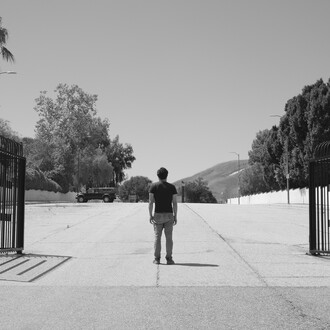In December 2025, the German painter and draughtsman Heinz Butz (1925 Dillingen – 2022 Munich) would have celebrated his 100th birthday. To mark this occasion, two exhibitions honour posthumously the artist’s work who died at the age of 96 in 2022. Jahn und Jahn shows a selective presentation of paintings from the 1960s which mark a specific and significant developmental stage – a breakthrough or more an outbreak within the oeuvre of Heinz Butz. This presentation is complemented by a retrospective exhibition at the Museum Starnberger See, which, in an institutional setting and with depth of content, provides acces to the unique cosmos of Butz’s work.
Heinz Butz was a silent avant-gardist who in a concentrated manner developed further what he had found in the past and in his own environment. His artistic expression was quiet yet full of power and self-confidence. He seemed often ahead of his time, precisely because he worked away from the styles and movements of his era. So he found and went his own way, creating a cosmos that was both interwoven and open. All art comes from life and experience, especially with Butz. He himself expressed this connection very concisely with the following words: ‘Plants need soil’ 1. A glance at the biography discloses how his art developed. Born in December 1925 in Dillingen, Swabia, Butz was thrown at the young age of eighteen into the Second World War. He experienced the cruelty of the war and its end on the Eastern Front, was taken prisoner by the Russians and brought into a labour camp. One year later, he returned to Germany.
Perhaps as a counter-movement to his experiences of fascism, war and imprisonment, he turned to nature and art. He studied at the art school in Augsburg and at the Akademie der Bildenden Künste in Munich. He returned to both institutions later as a teacher. Butz devoted himself to drawing and painting with passion and concentration. He filled numerous sketchbooks with nature studies, practising the reproduction of what he saw and felt. In his first paintings made around 1950, the artist experimented with this area, which was new to him yet already centuries old. Ten years later, his artistic language had matured and Butz developed his own rigorous yet open style of painting based on the basic elements of line, form and colour. He had thus established the focus of his artistic expression and began to explore its possibilities.
In the decades that followed, Butz created a body of work that defies categorisation. It includes pictorial objects, sculptures made from found objects, as well as paintings on canvas. These paintings – a selection of which can be seen in the exhibition – are technically steeped in a painterly tradition, yet they break radically with the foundations of art history. Whereas the root of all artistic creation had previously been the communication of emotion, insight and meaning through the medium of the image, now the image itself comes to the fore – as a pure object in the world, as composition, as form, as body and energetic counterpart. Nevertheless, the works may still contain echoes of recognizable forms. However, the recurring fragments of fleeting motifs only serve to emphasise the semantic detachment, indeed the freedom, of the works. This delicate balance of forces is the mastery of Heinz Butz who suceeded in translating sensitivity directly into art. His art evokes emotion without resorting to iconography and at the same time without destroying it.
(Text by Benjamin Tillig, Director Museum Starnberger See)
Notes
1 Quoted after: Gottfried Boehm, ‘Das Handwerk des Auges’, in: Heinz Butz. Malerei 1949 – 2018, Sieveking, Munich 2018, p. 7.
















